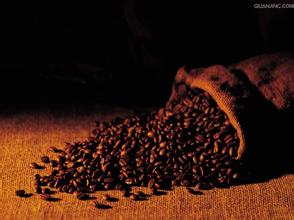Introduction to the area of Manor production by Grinding and Calibration of Fine Coffee beans in Tanzania
The types of rainfall can be divided into bimodal distribution and unimodal distribution. The areas with double bee rainfall include the provinces around the Lake Victoria basin, the northeast highlands, the coastal and inland northeastern. The bimodal rainfall area is characterized by two rainy seasons. The short rainy season occurs from September to December. The total rainfall can reach 200-500 mm. The long rainy season occurs from March to May, and the rainfall reaches 300-600 mm. The areas outside the double-bee rainfall area are all single-bee rainfall areas. The rainfall time is from November to April, and the rainfall reaches 500-1000 mm. Tanzania implements the federal presidential system. For a long time, the Revolutionary Party was in power for a long time, and the political situation was stable. In the first multi-party general election held in October 1995, the opposition Civic United Front (CUF) accused the Revolutionary Party of fraud in the general election and refused to recognize the Zanzibar Salmin government. In June 1996, the Revolutionary Party held a national Congress, and Mkapa was elected chairman of the party, realizing the unified leadership of the party and government. In November 1997, the Revolutionary Party held its fifth national Congress, and Mu was re-elected chairman of the party. In October 1999, Tanzania's "founding father" and former president Nyerere died. While holding high the banner of unity and unity advocated by Nepal, he vigorously strengthened the building of the ruling party and political power, and the political situation continued to maintain stability.
Washed beans from Kilimanjaro, Tanzania, planted in bourbon above 1800 meters above sea level. Cooked beans are moderately baked. Raw beans show yellowish green, beans particles are small and round, the particle size is more uniform. When the hand flashes, Tanzania's performance is slightly lower than that of Kenya, and it is prone to the smell of cucumbers and green beans. The acidity will be concentrated in the front, and after moderate acidity and sweetness, it will show chocolate and woody aromas. As for the cooking method of this bean, I recommend siphon. The siphon pot will enhance the sweetness and make the flavor more concentrated, and the increase of alcohol thickness will make up for the thinness of the flavor. On the whole, the performance of the siphon pot is better than that of hand flushing.
Please indicate the source of non-commercial reprint. Tanzania is also often compared with its nearest neighbor Kenya. It is said that the earliest Arabica coffee in Tanzania was introduced by Christians from Kenya and is similar to Kenya in flavor characteristics. With grapefruit aromas and soft and bright acidity. However, because the economic conditions of Tanzania are worse than those of Kenya, the production conditions are poor. Tanzania's quality control is not strict enough, destroying the quality of coffee in many processing links, which can not compete with Kenya, which is famous for its high quality. Although it is similar to the Kenyan flavor, Tanzania as a whole is smoother and softer and belongs to the balanced type. With moderately low acidity and sweetness, dark chocolate finish, moderate mellow thickness. Compared with Kenya, which has a prominent personality, Tanzania is less hierarchical and does not give a very prominent feature after drinking, which makes people less impressive. But on the contrary, its soft and round characteristics are also more pleasing, which is easy to be accepted by people who are new to coffee.
Most of the Tanzanian beans are grown in Mr. Kilimanjaro and Mt, near the northern Kenyan border. The coffee producing areas around Meru, often referred to as "Clemangaro", are occasionally named after the distribution center Moshi or Arusha. In addition, on the southern side of the border, a little washed Arabica beans are produced, named after the nearby big city Mbeya or the distribution center Pare. The way of grading is similar to that of Kenya, distinguishing sizes by the English alphabet. Most Tanzanian beans have typical African bean characteristics. The better Clemencaro, similar to ordinary Kenya, has a strong texture, is usually milder acidic than Kenya, and evenly stimulates the taste buds in the middle and sides of the back of the tongue. It tastes a bit like tomato or soda. As for southern beans, they are similar to secondary water-washed mochas, with soft and ingratiating weak acidity, round taste, and medium texture. Beans from neighboring Malawi (Malawi) also have the same quality as Tanzania beans.

Important Notice :
前街咖啡 FrontStreet Coffee has moved to new addredd:
FrontStreet Coffee Address: 315,Donghua East Road,GuangZhou
Tel:020 38364473
- Prev

Introduction to the Grinding scale of the Regional treatment method for the Coffee Bean in Guatemala
All of Guatemala is made up of mountains and plateaus. There are Kuchu Matanes Mountains in the west, Madre Mountains in the south, volcanic belts in the west and south, with more than 30 volcanoes. Tahumurco volcano is 4211 meters above sea level, which is the highest peak in Central America. Earthquakes are frequent. There are Petten lowlands in the north. There are narrow coastal plains on the Pacific coast. The major cities are mostly distributed in the intermountain basins in the south. Its
- Next

Flavor description of Rwandan Coffee beans introduction of Grinding scale varieties and taste Manor
Rwanda (Rwanda) coffee with its high-quality washed Arabica coffee beans, eye-catching, in the international market is becoming more and more popular. According to Karuritwa, marketing and promotion officer of the Rwandan Coffee Association, Rwanda plans to export 3000 tons of coffee this year, further increasing coffee production to meet the increasing market demand. The largest coffee drink in the world
Related
- Detailed explanation of Jadeite planting Land in Panamanian Jadeite Manor introduction to the grading system of Jadeite competitive bidding, Red bid, Green bid and Rose Summer
- Story of Coffee planting in Brenka region of Costa Rica Stonehenge Manor anaerobic heavy honey treatment of flavor mouth
- What's on the barrel of Blue Mountain Coffee beans?
- Can American coffee also pull flowers? How to use hot American style to pull out a good-looking pattern?
- Can you make a cold extract with coffee beans? What is the right proportion for cold-extracted coffee formula?
- Indonesian PWN Gold Mandrine Coffee Origin Features Flavor How to Chong? Mandolin coffee is American.
- A brief introduction to the flavor characteristics of Brazilian yellow bourbon coffee beans
- What is the effect of different water quality on the flavor of cold-extracted coffee? What kind of water is best for brewing coffee?
- Why do you think of Rose Summer whenever you mention Panamanian coffee?
- Introduction to the characteristics of authentic blue mountain coffee bean producing areas? What is the CIB Coffee Authority in Jamaica?

